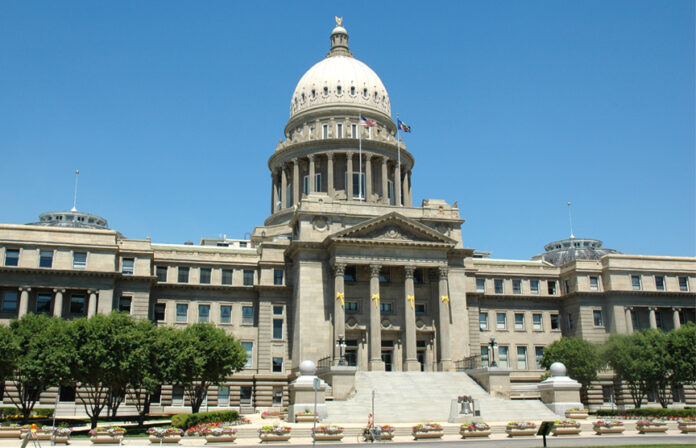Idaho lawmakers consider two controversial voting-related measures

Photo credit: Idaho State
Legislature
If some lawmakers in the Idaho State Legislature have their way, you won’t be voting in August anymore and you may never be voting on a ballot initiative ever again. That may sound a bit hyperbolic, but it’s pretty spot on. And, there are two sides to every story.
What follows is a summary of some recent higher profile bills being considered by Idaho lawmakers this session and where they stand in the lawmaking process. This is not an editorial, but to keep things 100% honest, it’s not a typical report either.
Senate Bill 1110—
Ballot Initiative Ballet
Frame of reference: On Idaho ballots there are only a few and sometimes zero initiatives for voters to yae or nae. Where in, for example, California, a ballot with a dozen or more initiatives is commonplace. In fact, in 1988, when California drivers were fed up with exorbitant car insurance rates, Proposition 103 was put on the ballot. Soon after—in the very same election—propositions 100, 101, 104 and 106 landed on the ballot. Some of them cancelled each other out and were written by the insurance companies themselves. It was a ballot initiative rave party; no one knew what they were really doing, but they thought they were doing good while doing it. Moral of the story: Putting strict controls on the ballot initiative process isn’t necessarily a way for the ruling class to quiet those they rule. In fact, it can sometimes be the opposite. Idaho is one of 26 states with a general ballot initiative process, where other states reserve the right for the legislature to nix a voter-requested initiative before it lands on an official ballot.
Although real estate prices are making it feel like California in parts of the state, we’re hardly the Golden State when it comes to getting an initiative on a ballot. California’s process for getting an initiative on a ballot is to reach a signature-count benchmark—something easier to do in a populace state. In Idaho it requires 6% of voters across 18 of the state’s 35 legislative districts to sign a petition. That dance isn’t easy, especially in a state with a lot of territory to cover.
Getting an initiative on a ballot would become significantly more difficult and more costly if the bill being considered in the Senate eventually gets signed into law. Specifically, the bill would require 6% of voters across all 35 districts to sign a petition. Good luck, Boise and north Blaine County activists, the Motel 6 in Sandpoint will keep the light on for you. America was founded under the concept of the people putting limits on the government. Somehow, the initiative process may now get used—for better or worse—by the government to put limits on its people.
House Bill 106—
August Voting Vacation
It sounds efficient. Reduce the number of elections so that all elections can run more smoothly, which in theory might even increase the amount of voter participation and voter knowledge come November and May. That’s how bill sponsor Rep. Vito Barbieri (R-Dalton Gardens) has publicly defended it. And it only impacts school districts.
But school district officials across the state are reeling over the possibility the House bill gets warmly received in the state Senate, which would put it at the tip of the governor’s pen, where it could get signed into law. And if that happens, school districts would not be able to hold bond and levy elections immediately after their budget-setting sessions which take place in June and July.
At the Blaine County School District, where a levy election for facilities improvements is forthcoming, trustees would have to push to November. That means levy money—assuming the levy passes—wouldn’t show up for more than a year. The district says it would leave them with the following choices:
1. Dip into reserves.
2. Cut staff salaries.
3. Do both.
300+ Bills
There are well over 300 bills listed on the House and Senate legislation page. If there is a bill you feel should be made more high profile than it is now, please let us know. You can track legislation here:
legislature.idaho.gov/sessioninfo/2021/legislation. And you can let us know your thoughts and concerns here: news@woodriverweekly.com.



